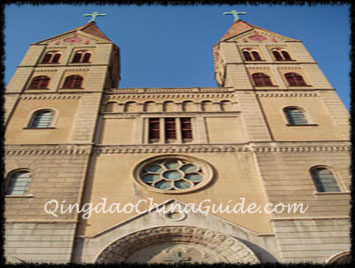- Categories In Temples & Churches in Qingdao
- No Comments on ZhanShan Temple
Temples & Churches in Qingdao

Qingdao has several unique temples and churches that are a reflection of its tumultuous history and diverse culture. Human beings began to set foot on Shandong soil some 6000 years ago. The Dongyi nationality, one of the most important ethnic groups of the Chineses nation, created the Dawenkou Culture, the Longshan Culture, and the Dongyueshi Culture. During the Eastern Zhou Dynasty (770BC-256BC), Qingdao was governed by the State of Qi which established the city of Jimo, the second largest city in Shandong at that time. After Emperor Qin Shi Huang united China in 221BC, he visited the Langya Terrace (today’s Jiaonan City) three times. It was from Mt. Langya that Xu Fu, an official sent by Emperor Qin Shi Huang, set out his voyage to Japan and Korea with his fleet.During the Han Dyansty (206BC-220AD), Emperor Wudi offered sacrifices to immortals in the Jiaomen Temple on the Buqi Mountain which is located in today’s Chengyang District. He also built nine temples on the Nugu Mountain along the Jiaozhou Bay to worship Heaven and his ancestors. Throughout the Tang (618-907), Song (960-1279), Yuan (1271-1368), Ming (1368-1644) and Qing (1644-1911) dynasties, Taoist temples and nunneries could be found everywhere on Lao Mountain. Lying at the southeast end of Qingdao and joining the Yellow Sea, Mount Lao is home to a famous Taoist Quanzhen Sect sanctuary. Taoist temples and beautiful scenery make it one of the most important “must see” scenic spots in Qingdao. Tsingtao Beer, The most famous in China, is brewed in Qingdao using spring water from Mt. Laoshan.
Temples & Churches in Qingdao: